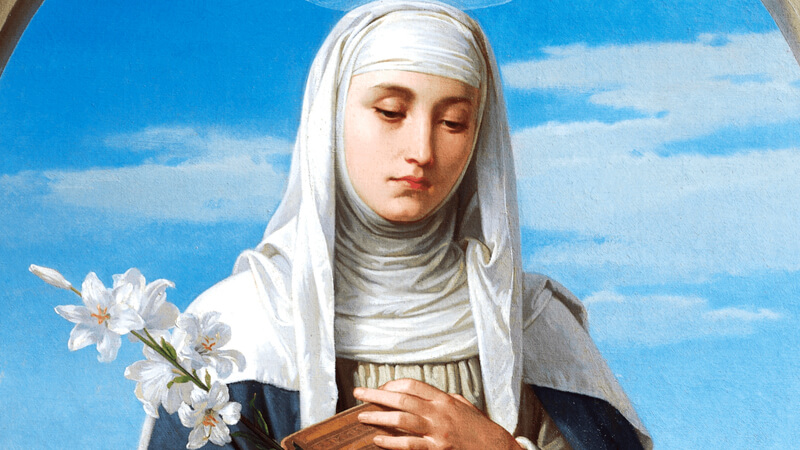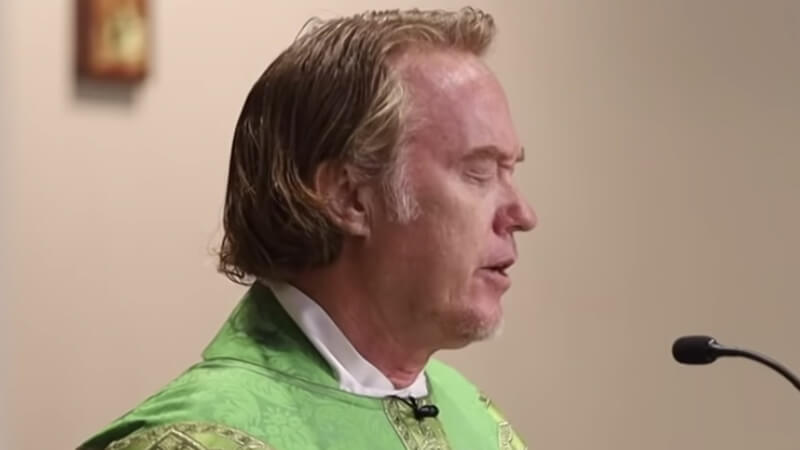His intense spiritual life and his mystical experiences, dictated to his disciples, were not incompatible with his active participation in the political and religious conflicts of the time: he promoted a crusade against Islam and tried to avoid the Schism of the West. Canonized by Pope Pius II in 1461, Paul VI declared her a doctor of the Church in 1970.
Biography of Saint Catherine of Siena
- Born:- 25 March 1347, Siena, Italy
- Died:- 29 April 1380, Rome, Italy
- Nationalty:- Italian
- Place Of Burial:- Basilica of San Domenico, Siena, Italy, Santa Maria sopra Minerva, Rome, Italy
- Parents:- Giacomo di Benincasa, Lapa Piagenti
Daughter of Jacopo Benincasa and Lapa Piangenti, since her childhood she had mystical outbursts and felt called by God; this forced her to fight against the incomprehension of her relatives, who intended to marry her.
See Also: Biography of Gautama Buddha
After conquering many difficulties, it managed to be received in the third order of the Dominicans (1363-64). In the convent lived years of hard penances, although consoled by frequent supernatural apparitions.
The fame of his virtues gave him great popularity, but he did not free her from certain suspicions that arose in the ecclesiastical circles, which put her under surveillance.
In 1375 he received in Pisa the stigmas of passion; in 1376, being in Avignon, worked in favor of the return of the popes to Rome. Very intense was the activity of the saint during this time; thus, he crossed the courts of all Italy to preach peace, concord and the crusade against the Turks; also tried in Rome to avoid the schism.
The fervor of his public performance did not diminish the intensity of ecstasy or the rigor of ascetic practices; consumed by ardor and fatigue, died at the age of thirty-three.
Saint Catherine of Siena dictated to some faithful disciples the Dialogue of Divine Providence (1378) and many letters, of which about four hundred are preserved, although not all of them are authentic.
Woman possessed of an exceptional strength of will, she enjoyed numerous mystical experiences, whose ecstasy and revelations she speaks in the correspondence.
However, it owes its influence in the political and ecclesiastical world of the fourteenth century above all to the energy and zeal with which he acted in the conflicts of the time. His prose lacks technical wealth, but relies on the infinite resources of the imagination and the instinct of the saint, which often give to its pages lit, tumultuous and almost baroque tones.
The lack of literary experience is supplemented in his writings by a whole series of virtues: a subtle and varied sensibility, a unique psychological penetration, the effectiveness of his reasons,
The Dialogue of Divine Providence (1378) was given by St. Catherine of Siena in a moment of mystical exaltation to some disciples, among who were Cristofano di Gano Guidini, who later gave a more literary form to the text in Italian, and Stefano Maconi, which made its translation into Latin and corrected and approved the wording of the precedent.
He had various titles: Book of the divine doctrine, Treaty or Book of Divine Providence, book of divine revelation, divine doctrine Dialogue, or just Dialogues.
The work was first published in manuscripts (hence the number of codices and the number of its variants) and was first printed in 1472 in Bologna by Baldassarre Arzoguidi, and another seven times from 1472 to 1479. The best-known edition is who took care of Girolamo Gigli, who published the works of the saint (1707 and following years).
The present division in treatises and chapters that the work presents / displays is of an age after the oldest codices.
The literary reduction of Cristofano, by scruple of fidelity, still preserves the naivete of expression, the pleonasms, the idiocy of vulgar speech, and even sometimes the syntactic disconnection, easy on the one who dictated under the fire of divine inspiration, and the consequent darkness or ambiguity of some expressions.
In its present form, the Dialogue of Divine Providence consists of one hundred and sixty-seven chapters; the first seven are a kind of introduction; from IX to LXIV bear the title “Treaty of discretion”; from LXV to LXXXIV, “Treatise on Prayer”; follow the “Treaty of Providence” (CXXXV-CLIII) and the “Treaty of Obedience” (CLIV-CLXVII).
But the matter of the chapters often does not correspond to the title of the treaty, and extends to all branches of asceticism and mysticism.
A fundamental concept that serves as the guiding thread of this mystical work lies in the purpose of leading the soul from “servile fear”, that is, from the fear of divine punishment, to the perfect love of God, to being “children and friends “.
The “discretion” to which the first treaty alludes is but a true knowledge that the soul must have of itself and of God. Broken by the disobedience of Adam the way of heaven, God made his son Jesus Christ a bridge consisting of three “steps,” the three states or three faculties of the soul.
Those who want to follow another path perish spiritually, upset by carnality, avarice, injustice and false judgment.
The “Treatise of Prayer” develops the high degree of perfection to which the soul can reach through mental prayer, that is, of direct conversation with God.
It warns against some deceptive aspects of it; enunciates “five ways of tears” and their fruits, and explains how the light of reason must be strengthened by the light of faith to come to the contemplation of divine truth. He then stops at the priests’ mission, lamenting that the indignity and guilt of many of them prevent souls from reaching perfection.
The brief “Treaty of Providence” illustrates all the ways that God used and uses to lead salvation to souls; and the “Treaty of obedience” deals with obedience to God in its various forms according to the various states.
Printed for the first time in Bologna in 1492, the 381 letters of Saint Catherine of Siena constitute another estimable work of the Christian mystique. In a continuous reading Catherine’s letters may seem monotonous, but it is because each of them reflects all the mystical, social and active conception of the Holy One, and they all burn with the same ardor of charity.
Also from a purely literary point of view can displease the expressions of crude realism in which abound, and the contrast that sometimes results between the sublime of the concept and the grotesque of the form.
But the intention of Catherine of Siena was not literary, but religious, and to conquer the souls it seemed to her as useful the clarity of the mind as the violent shaking of the senses.
Hence the particular poetry of these effusions of a heart in love with God and of men as few has been. It really circulates a fervid current lyrical by these letters, made of light, of passion and of will as the life of the Holy, “blessed and painful” image of the true servant of God.
Informed all by the same unalterable doctrine and inflamed by the same charity, the letters reveal the mind and heart, the faith and action of St. Catherine, and summarize her brief and heroic life.
The saint chose retirement and contemplation only when it was necessary for her to converse with God to receive her teachings, advice and consolations, but then she would return to praying, submerging herself in the turbulent waves of public life, bearing witness to the truth, serene in the midst of the storms.
His letters reflect his humble and yet domineering figure, his firm and luminous doctrine, his intrepid and beneficent action.
Speak with gentleness, humility and gentleness even to the hardest and most corrupt hearts. But he does not compromise with vice: he puts his finger on the sore, expresses clearly and frankly his reprobation,
Catherine of Siena was not only the consoler of the afflicted, the counselor of the dubious, the admonisher of sinners and the nurse of the sick, but a moral force and authority that imprinted an indelible seal on the whole life of her time.
The charitable action that she developed, a true apostolate of love and sacrifice, shines forth in her letters. More than anything, the wars that “wipe out the poor are destroyed by the soldiers, who devour the flesh and men.”
A single war would want: the crusade against the infidels for the liberation of the Holy Sepulcher, and writes for all the princes and warlords of his time. Another cruel thorn tortured his heart: the corruption of the Church. He suffers for her, and in the letters he accuses himself as if it were his fault.




